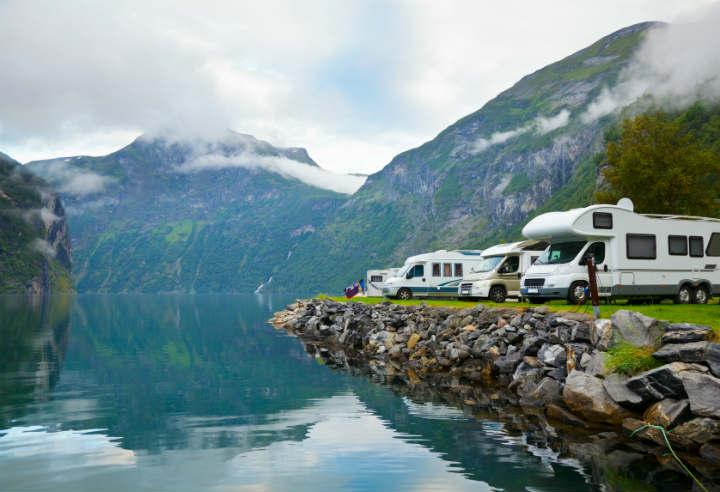Camping can not only be a great way to see Europe and enjoy a more authentic experience, but it also offers a much cheaper option as compared to other types of accommodations. There are few Americans who seem to take advantage of the opportunity, so if you do you’ll probably have the chance to mingle with a lot more Europeans and get to know the culture better.
There are more than 10,000 campgrounds across the continent, although the experience can differ a bit compared to what you’ll find in the U.S. Campgrounds may be located on the outskirts of an urban center and are often more functional, similar to a city park, than set in a remote, scenic location. Some are basic, similar to a park-and-ride while others offer a resort-like property complete with restaurants and even water parks. There is no need for a reservation and they are rarely full.
Campground locations
By writing to each country’s tourist office, you can obtain helpful camping maps. Guidebooks are also available, such as Caravaning in Europe. In general, you’ll pay anywhere from 6 Euro to 25 Euro to camp; far cheaper than the cost of most hotels, bed and breakfasts and even hostels. There are also hundreds of websites dedicated to camping Europe, offering specific information for many different countries. Many offer ratings and reviews of the various campgrounds and are available in multiple languages, including English. Some of the best offer the ability to locate campgrounds through maps or locations.
Camping equipment
You can bring your own camping equipment, but it usually makes more financial sense to just buy your gear when you arrive due to the high airline baggage fees. Tents, sleeping bags and other supplies are cheaper at the large superstores that can be found in the U.K., France, Germany, Italy and Spain. Equipment rentals are also widely available. Just get the basics; instead of using a stove, keep your meals simple or enjoy the food in the campground café or nearby establishments.
Wild camping
If urban camping doesn’t sound like your idea of an outdoor adventure, there are some places in Europe where you can go “wild camping,” meaning just pitching your tent in a good spot, and not inside of a campground or designated area.
In Scotland, you can camp on public hill land as long as you’re 100 meters from a road and don’t leave any trash behind. There are some wonderful, incredibly scenic places available to camp throughout the Scottish Highlands. The Hebrides are fantastic; consider the west coast of Harris between Horgabost and Scarista for spectacular views.
Norway, Sweden, Estonia, Iceland and Finland are all countries in which you’ll find numerous beautiful places for wild camping.
Safety
European campgrounds tend to be very safe and are generally theft-free. Typically, you’ll find them filled with honest, middle-class European families and most campers leave their gear in their van or zipped up inside their tent. One of the biggest advantages of camping here is getting to know people from other countries, and oftentimes your campmates will become your new friends that help watch your back allowing you to leave your things and know that they will be safe.
Related Europe posts:
Top Ten Most Beautiful Castles in Europe
Top 10 Scenic Rail & Train Adventures in Europe

